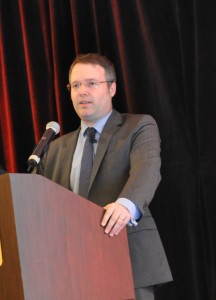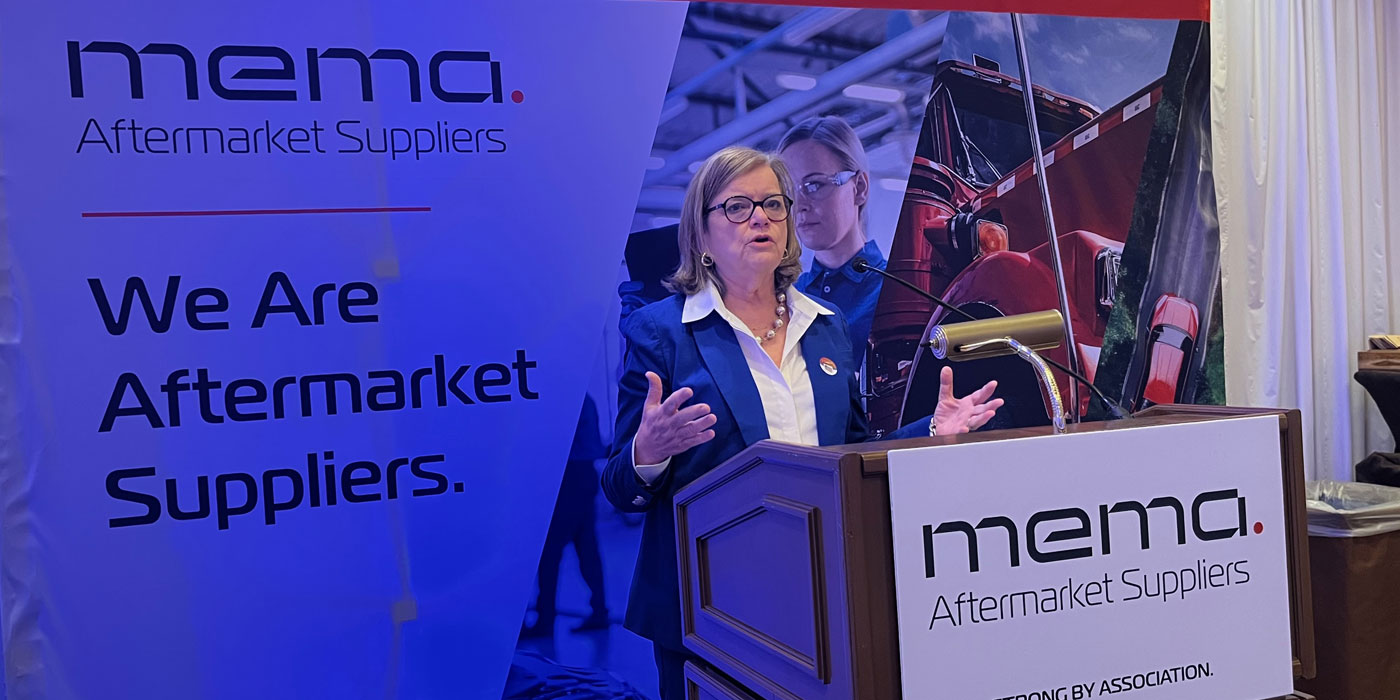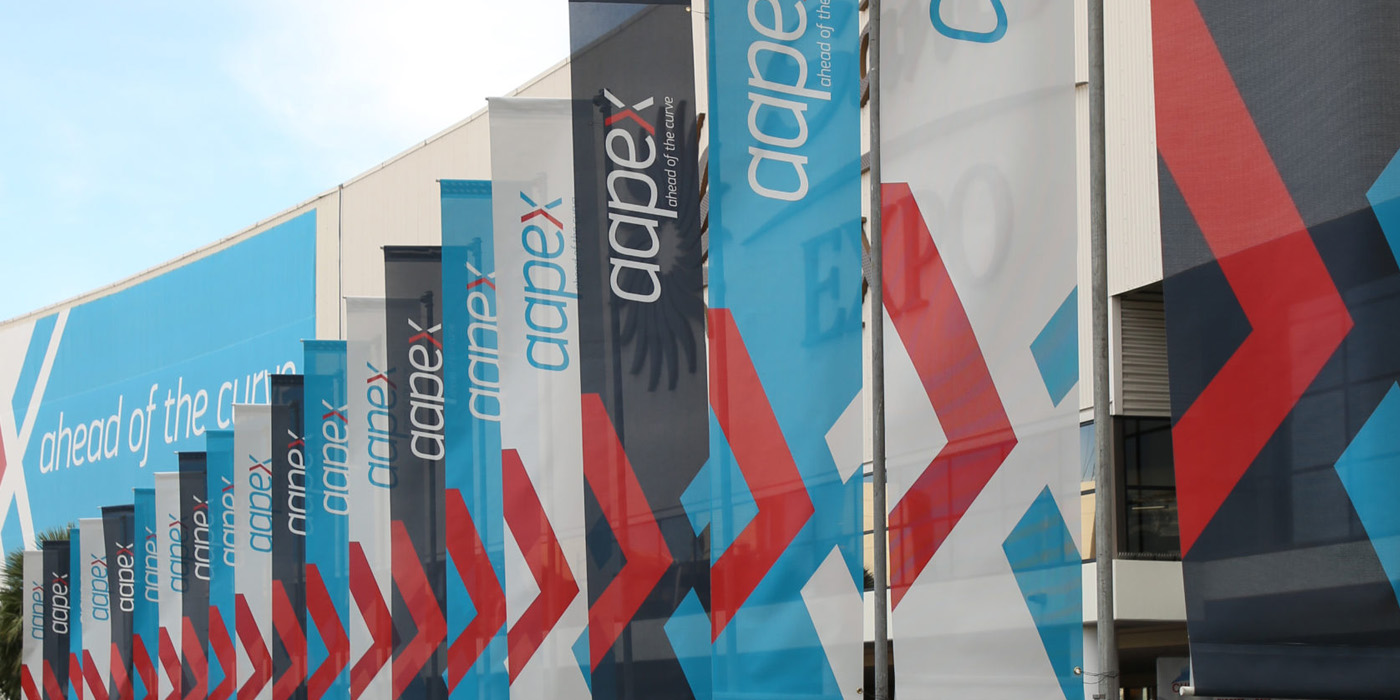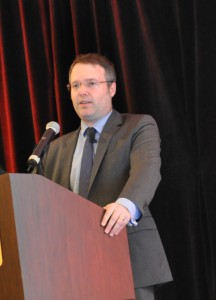
CLEARWATER, Fla. — This week at the Automotive Aftermarket Suppliers Association (AASA) Tech Conference in Florida, it was noted that there are four areas in which the AASA Technology Council (ATC) strives to cover. Two are traditional, and two are newer: Customer facing technologies (product data, catalog data, etc.), information technology (networks and hardware), processed technology (robotics, virtual reality, 3-D printing) and advanced vehicle technologies (telematics, the internet of cars and the connected car). While all are important, the ATC focuses down on a theme each year, and this year’s event is focusing on “Technology Game Changers.”
With 175 attendees at the 2015 AASA Technology Conference and an array of speakers, the groundwork for collaboration to produce change is very present. The event formally started with the keynotes addresses following welcome from Lisa Henkel, outgoing chairperson of ATC and CRM / end market development manager, Gates Corp.
The keynotes from the event focused on two data-centric points of view: how disruptive technologies can be commercialized with autonomous vehicles, and secondly, predictive technology in relation to the parts industry.
Patrick Archambault: Vice President – Global Investment Research: Automotive, Goldman Sachs
“The Automotive Industry’s Disruptive New Era”
A concept on just about everyone’s mind is autonomous vehicles. It’s what the room was tuned into with the turn of Archambault’s keynote, instantly focusing on the idea. To open his keynote, he polled the attendees in the room, asking via a cell poll if they individually would consider purchasing or leasing a vehicle with autonomous capability. The response was generally positive, with a split of 65 percent on yes and 35 on no.
By the end of the presentation, we knew this wasn’t the case with general public polls. Currently, 49 percent of consumers are not interested at all. Only a small 13 percent said they’d definitely be interested, according to Archambault.
Archambault outlined that there were four sources of change when it came to the automotive world: green technologies, (active) safety, convenience and affordability. With several of these factors, autonomous cars is one of the primary ways to address the issues.
What could benefit from autonomous vehicles? The highest factors that Goldman Sachs predicted were in the areas of accident reduction, congestion reduction, increased productivity and additional drivers, for a potential gross benefit of $3.5 trillion globally, or 5 percent of the global GDP. And, while this number wouldn’t be a reality for some time, it is significant. Archambault commented, “I’m not pretending that this is something that wouldn’t happen over a very long period of time, and there would be offsets … but there is one message that this sends to us.”
The message: The question is not if. The question is when.
The true discussion starts with the level of automation. The most commonly accepted points are as follows (as taken from the NHTSA and Goldman Sachs):
- Level 0 – No Automation: Driver in complete and sole control
- Level 1 – Function-specific automation: Driver can maintain overall control, but can cede limited authority (ex. adaptive cruise control)
- Level 2 – Combined function automation: Driver responsible for monitoring the roadway and available for control at all times on short notice (ex. adaptive cruise control with lane centering)
- Level 3 – Limited self-driving automation: Driver enabled to cede full control under certain traffic conditions, but is available for occasional control with a comfortable transition time
- Level 4 – Full self-driving automation: Driver to provide navigation input, but is not expected to be available for control at any time during the trip.
There are numerous different elements to talk about when you’re considering the autonomous car – from emergency braking, to adaptive cruise control to lane departure control. Many of these have been under development for years. However, the biggest challenges lie not in the hardware and software, but with cyber security and, most of all, social acceptance. Societal acceptance, the hardest one to tackle, is projected to reach “adoption” for level 3 by 2019, and level 4 by 2024.
The rise of autonomous driving-related content even surprised Goldman Sachs. They were expecting to start seeing a significant potential revenue/profit pool in the range of 5 to 10 years from now, but, in truth, it’s happening now.
Around the world, countries have different expectations as to when. Currently, the target dates are the United States for 2025; Europe for 2025; China for 2030; and Japan for 2028.
But there are real challenges. The question of branding, according to Archambault, will become a real concern. Will it matter what the OE is when the consumer just going to sit in it and let it drive him or her around? In addition, there’s the question of software Currently the auto industry is used to updating every seven years, while these new technologies will require updates every one to two years.
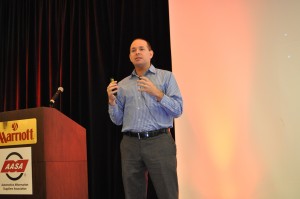
Mario Montag: Founder and CEO, Predikto
“Predicting Part Performance in the Field”
The Internet of Things, or more commonly known as IoT, has become another common question among the professional community. Another question poll asked of the crowd at the AASA Tech Conference illustrated where the major company’s stood when asking: “What is your company’s position on IoT?”, 25 percent responded that they didn’t know what it was, 41 percent understand it, but have not identified implications or applications for their companies, another 24 percent are researching how to take advantage of it and 10 percent are already utilizing IoT technologies.
Mario Montag, founder and CEO of Predikto, said this topic was for the 90 percent who were still working on their IoT capabilities, in whatever capacity that would be.
The Internet of Things, he described, was the connection between the digital world and the physical world. “Think of IoT as a key enabler to shift your business models to something that’s easier to maintain, easier to scale, more profitable. So the businesses that are able to make that shift are going to kill their competitors,” Montag noted.
While Predikto develops and implements predictive technologies for companies that are trying to get a glimpse of the health of their industrial equipment, Montag maintained that predictive technologies could affect everyone, especially into the automotive space. In his example, he noted that we all know the brands that create the Apple Watch, Amazon Echo and other products that have recently landed in our market, but analyses have determined that these gadgets will only make up 30 percent of the market. The rest will be industrial. By 2020, $675 billion is the estimated value of IoT in the industrial asset utilization space.
“Predictive analytics is confusing. It’s really difficult. There aren’t enough people out there across all of the industries that are working on it. [It] allows us to predict an event that’s going to happen in the future. If I know that that event’s going to happen in the future, and I can act and prevent that event from happening because that prevention will affect my bottom line, I’m winning,” Montag stated.
He also stated that there’s a large disconnect between the scientists that are putting together the current algorithms for predictive technology and the people who know the business. He said that it is the cause for a lot of confusion and failed products, but that predictive technology can change that. “Organizations that are investing and trying things and more importantly failing are going to win. Why? Because it’s an early technology but you need to be comfortable and trying things in you industries, in your jobs, in your companies and failing. And being comfortable with failing because you’re not going to get it right the first time. From there, you iterate and you learn.
Montag stated that he also believes many organizations, even ones that are trying to work on data they have now, are doing it in the wrong way. Much of the data we have will be obsolete within the next year, he says. The challenge right now is not generating data – 80 percent of the data that we have is created and subsequently stored permanently, 3 percent is prepared for analysis, .5 percent is analyzed and even less than that is operationalized. Furthermore, 90 percent of the data today has been created within the past two years. By 2020, there will be over 44 zetabytes of data.
Instead, using predictive analytics, forecast for the future. He says to make the right investments in the future by talking to the right people. “Make sure that the people who are closest to the customer, who understand the value of what you’re selling, are involved in the innovation,” Montag says. “Ask ‘How do we deliver this message?’”

